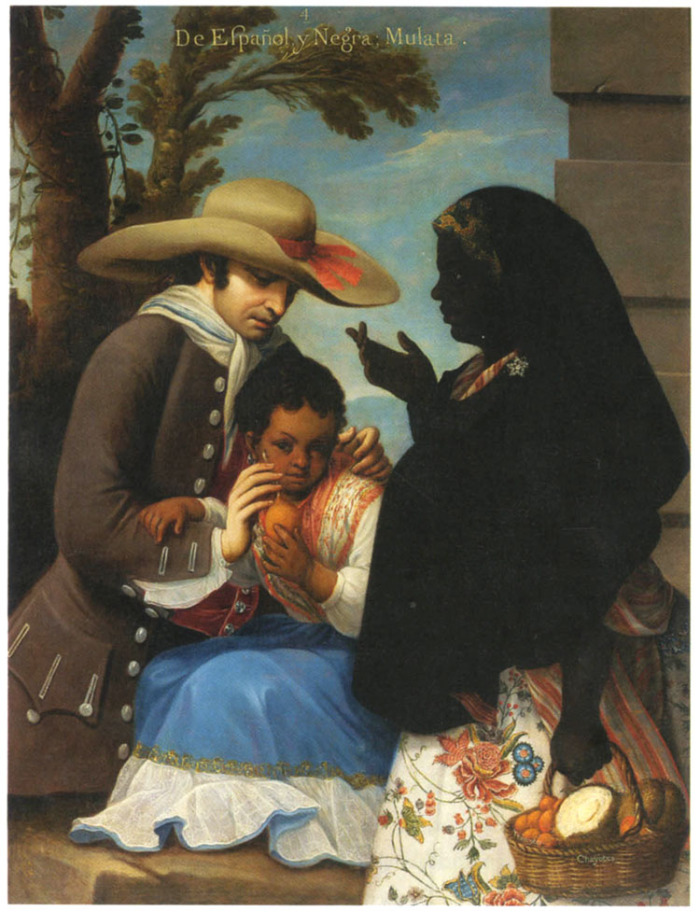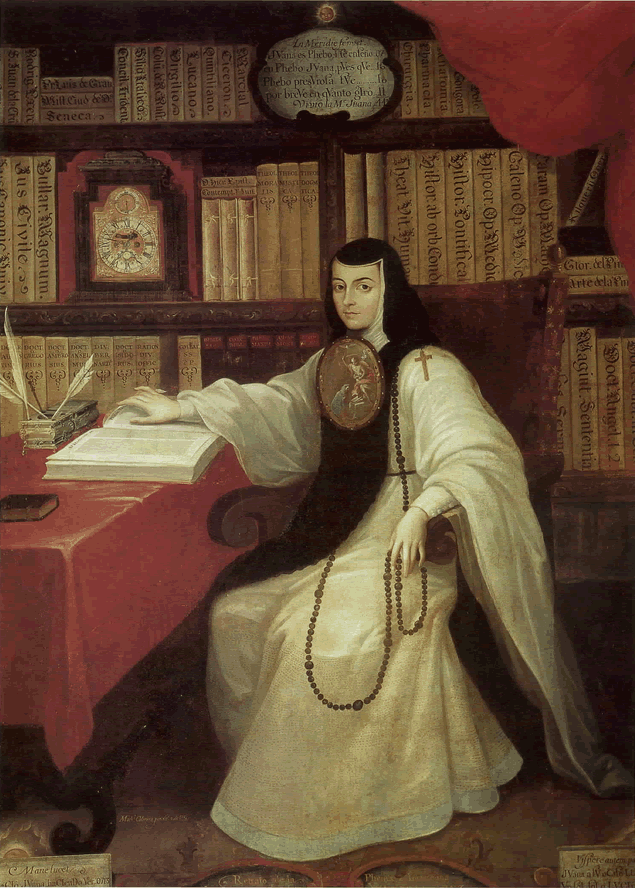|
Gaspar De La Cerda, 8th Count Of Galve
Gaspar de la Cerda Silva Sandoval y Mendoza, 8th Count of Galve, Lord of Salcedón and Tortola (in full, ) (11 January 1653 – 12 March 1697) was viceroy of New Spain from November 20, 1688, to February 26, 1696. As viceroy of New Spain Cerda Sandoval Silva was only 35 years old when he was named viceroy of New Spain, in May 1688. He arrived in Veracruz in the middle of October. On the road from there to Mexico City he met with his predecessor, Melchor Portocarrero, 3rd Count of Monclova, on November 8, 1688. He arrived at Chapultepec on November 11 and took the oath of office before the Audiencia on November 20, 1688. His solemn entry into Mexico City was December 4, 1688, but his term of office is dated from the earlier swearing-in ceremony. Shortly after his arrival, the viceroy received a message from the governor of New Mexico that three Frenchmen from the French colony in the Seno Mexicano (Texas) had arrived in New Mexico. The viceroy ordered General Alonso de León- ... [...More Info...] [...Related Items...] OR: [Wikipedia] [Google] [Baidu] |
The Most Excellent
The Most Excellent ( (male) or (female), literally "Most Excellent Lord/Lady") is an honorific prefix that is traditionally applied to certain people in Spain and certain Spanish-speaking countries. Following Spanish tradition, it is an '' ex officio'' style (the holder has it as long as they remain in office, in the most important positions of state) and is used in written documents and very formal occasions. The prefix is similar (but not equal) to that of " His/Her Excellency", but in the 19th century "The Most Excellent" began to replace the former. The use of the prefix Excellency was re-introduced in Francoist Spain by '' Generalísimo'' Francisco Franco himself, who was formally styled as '' Su Excelencia el Jefe del Estado'' ("His Excellency the Head of State"), while his ministers and senior government officials continued using the prefix "The Most Excellent". The prefix " The Most Illustrious" (''Ilustrísimo/a Señor/a)'' is the lower version, and is mostly used for ... [...More Info...] [...Related Items...] OR: [Wikipedia] [Google] [Baidu] |
Acapulco
Acapulco de Juárez (), commonly called Acapulco ( , ; ), is a city and Port of Acapulco, major seaport in the Political divisions of Mexico, state of Guerrero on the Pacific Coast of Mexico, south of Mexico City. Located on a deep, semicircular bay, Acapulco has been a port since the early colonial period of Mexico's history. It is a Port#Port of call, port of call for shipping and cruise lines running between Panama and San Francisco, California, United States. The city of Acapulco is the largest in the state, far larger than the state capital Chilpancingo. Acapulco is also Mexico's largest beach and balneario resort city. Acapulco de Juárez, Guerrero is the municipal seat of the municipality of Acapulco (municipality), Acapulco, Guerrero. The city is one of Mexico's oldest beach resorts, coming into prominence in the 1940s through the 1960s as a getaway for Hollywood stars and millionaires. Acapulco was once a popular tourist resort, but due to a massive upsurge in gang v ... [...More Info...] [...Related Items...] OR: [Wikipedia] [Google] [Baidu] |
Cristóbal De Villalpando
Cristóbal de Villalpando (ca. 1649 – 20 August 1714) was a Baroque Criollo artist from New Spain, arts administrator and captain of the guard. He painted prolifically and produced many Baroque works now displayed in several Mexican cathedrals, including the cathedrals in Querétaro, Puebla and Mexico City, as well as a depiction of the Zócalo (main square) in Mexico City, showing the damage of the 1692 riot to the viceregal palace three years earlier.Richard L. Kagan, ''Urban Images of the Hispanic World, 1493-1793,'' with the collaboration of Fernando Marías. New Haven: Yale University Press 2000. Life Born in Mexico City to the influential Villalpando family, Cristóbal assumed duties in the local militia as an ensign, as well as painting with Baltasar de Echave Rioja (Echave the Younger) in the Echave workshop.Haces, Juana Gutierrez (2006) "Cristóbal de Villalpando" page 535 ''In'' Rishel, Joseph J. and Stratton-Pruitt, Suzanne (editors) (2006) ''The Arts in Latin Amer ... [...More Info...] [...Related Items...] OR: [Wikipedia] [Google] [Baidu] |
Inquisition
The Inquisition was a Catholic Inquisitorial system#History, judicial procedure where the Ecclesiastical court, ecclesiastical judges could initiate, investigate and try cases in their jurisdiction. Popularly it became the name for various medieval and reformation-era state-organized tribunals whose aim was to combat Christian heresy, heresy, apostasy, blasphemy, witchcraft, and customs considered to be Deviance (sociology), deviant, using this procedure. Violence, isolation, torture or the threat of its application, have been used by the Inquisition to extract confessions and denunciations. Studies of the records have found that the overwhelming majority of sentences consisted of penances, but convictions of unrepentant heresy were handed over to the secular courts for the application of local law, which generally resulted in execution or life imprisonment. Inquisitions with the aim of combatting religious sedition (e.g. apostasy or heresy) had their start in the Christianity ... [...More Info...] [...Related Items...] OR: [Wikipedia] [Google] [Baidu] |
Public Humiliation
Public humiliation or public shaming is a form of punishment whose main feature is dishonoring or disgracing a person, usually an offender or a prisoner, especially in a public place. It was regularly used as a form of judicially sanctioned punishment in previous centuries, and is still practiced by different means (e.g. schools) in the modern era. In the United States, it was a common punishment from the beginning of European colonization of the Americas, European colonization through the 19th century. It fell out of common use in the 20th century, though it has seen a revival starting in the 1990s. With the rise of social media, public shaming moved to the digital sphere, exposing and humiliating people daily, sometimes without their knowledge. Shameful exposure Public humiliation exists in many forms. In general, a criminal sentenced to one of many forms of this punishment could expect themselves be placed (restrained) in a central, public, or open location so that their f ... [...More Info...] [...Related Items...] OR: [Wikipedia] [Google] [Baidu] |
Castas
() is a term which means " lineage" in Spanish and Portuguese and has historically been used as a racial and social identifier. In the context of the Spanish Empire in the Americas, the term also refers to a theoretical framework which postulates that colonial society operated under a hierarchical race-based " caste system". From the outset, colonial Spanish America resulted in widespread intermarriage: unions of Spaniards (), indigenous people (), and Africans (). Basic mixed-race categories that appeared in official colonial documentation were , generally offspring of a Spaniard and an Indigenous person; and , offspring of a Spaniard and an African. A plethora of terms were used for people with mixed Spanish, Indigenous, and African ancestry in 18th-century casta paintings, but they are not known to have been widely used officially or unofficially in the Spanish Empire. Etymology is an Iberian word (existing in Spanish, Portuguese and other Iberian languages since th ... [...More Info...] [...Related Items...] OR: [Wikipedia] [Google] [Baidu] |
Mulattoes
( , ) is a racial classification that refers to people of mixed African and European ancestry only. When speaking or writing about a singular woman in English, the word is (). The use of this term began in the United States shortly after the Atlantic slave trade began and its use was widespread, derogatory and disrespectful. After the post Civil Rights Era, the term is now considered to be both outdated and offensive in the United States. In other Anglophone countries (the English-speaking world) such as English and Dutch-speaking West Indian countries, the word mulatto is still used. Countries with the highest percentages of persons who have equally high European and African ancestry — ''Mulatto'' — are the Dominican Republic (74%) and Cape Verde (71%). Mulattos in many Latin American countries, aside from predominately European and African ancestry, usually also have slight indigenous admixture. Race-mixing has been prevalent in Latin America for centuries ... [...More Info...] [...Related Items...] OR: [Wikipedia] [Google] [Baidu] |
Castizo
''Castizo''Pronunciation in Latin American Spanish: (fem. ''Castiza'') was a racial category used in 18th-century Spanish America to refer to people who were three-quarters Spanish by descent and one-quarter Amerindian. The category of ''castizo'' was widely recognized by the 18th century in colonial Mexico and was a standard category portrayed in eighteenth-century casta paintings. History In the taxonomic chart accompanying a work on casta paintings, ''castizo'' is given as "uncertain origin". It appears in 1543 with the meaning "class, condition, social position" (''calidad, clase o condición''). The term ''castizo'' applied to the offspring of a union of a Spaniard and a '' mestiza'' (offspring of a Spaniard and an indigenous woman); that is, someone who is of three-quarters Spanish and one-quarter Amerindian ancestry. During this era, various other terms (''mestizo'', ''cuarterón de indio'', etc.) were also used. Most scholars do not view the racial labels and hierar ... [...More Info...] [...Related Items...] OR: [Wikipedia] [Google] [Baidu] |
Mestizo
( , ; fem. , literally 'mixed person') is a term primarily used to denote people of mixed European and Indigenous ancestry in the former Spanish Empire. In certain regions such as Latin America, it may also refer to people who are culturally European even though their ancestors were Indigenous American or Austronesian. The term was used as an ethno-racial exonym for mixed-race that evolved during the Spanish Empire. It was a formal label for individuals in official documents, such as censuses, parish registers, Inquisition trials, and others. Priests and royal officials might have classified persons as mestizos, but individuals also used the term in self-identification. With the Bourbon reforms and the independence of the Americas, the caste system disappeared and terms like "mestizo" fell in popularity. The noun , derived from the adjective , is a term for racial mixing that did not come into usage until the 20th century; it was not a colonial-era term.Rappaport, Joa ... [...More Info...] [...Related Items...] OR: [Wikipedia] [Google] [Baidu] |
Carlos De Sigüenza Y Góngora
Carlos de Sigüenza y Góngora (August 14, 1645 – August 22, 1700) was one of the first great intellectuals born in the Americas - Spanish viceroyalty of New Spain (Mexico City). He was a Criollo people, criollo patriot, exalting New Spain over Old. A polymath and writer, he held many colonial government and academic positions. Sigüenza is considered the ''da Vinci mexicano'' ("Mexican Leonardo da Vinci, da Vinci") and among the most important intellectuals from Spanish colonization of the Americas, Colonial Spanish America— alongside Juan de Espinosa Medrano. Early life Sigüenza was born in Mexico City in 1645 to Don Carlos de Sigüenza y Benito, originally from Madrid, and to Doña Dionisia Suárez de Figueroa y Góngora, born in Seville, Spain, whom the elder Don Carlos met following his arrival New Spain in 1640. Sigüenza was the second oldest and first male of nine siblings. He was related to the famous baroque Spanish poet Luis de Góngora through his mother. He ... [...More Info...] [...Related Items...] OR: [Wikipedia] [Google] [Baidu] |
Nueva Vizcaya, New Spain
Nueva Vizcaya (''New Biscay'', ) was the first province in the north of New Spain to be explored and settled by the Spanish. It consisted mostly of the area which is today the states of Chihuahua and Durango and the southwest of Coahuila in Mexico as well as parts of Texas in the United States. Early exploration and the Viceroyalty Spanish exploration of the area began in 1531 with Nuño Beltrán de Guzmán's expedition. He named the main city he founded Villa de Guadalajara after his birthplace and the area he conquered "Conquista del Espíritu Santo de la Mayor España" ("Conquest of the Holy Spirit of Greater Spain"). The Spanish regent Queen Joanna replaced this with '' Nuevo Reino de Galicia'' ("New Kingdom of Galicia"). Especially under the leadership of Francisco de Ibarra, settlements moved north into the interior of the continent after silver was discovered around Zacatecas. Ibarra named the new area Nueva Vizcaya after his homeland in Spain, Biscay. Nueva Vizcaya inc ... [...More Info...] [...Related Items...] OR: [Wikipedia] [Google] [Baidu] |






